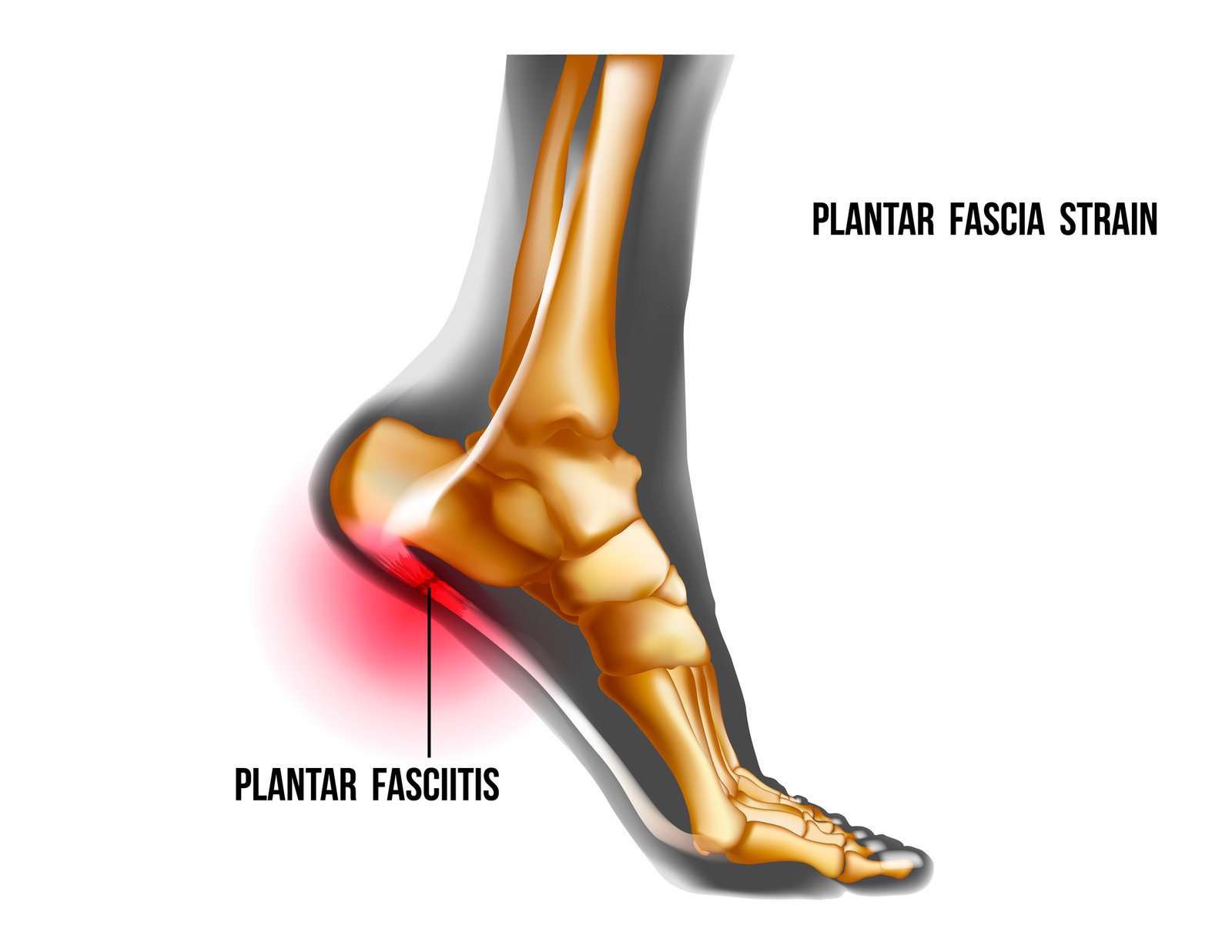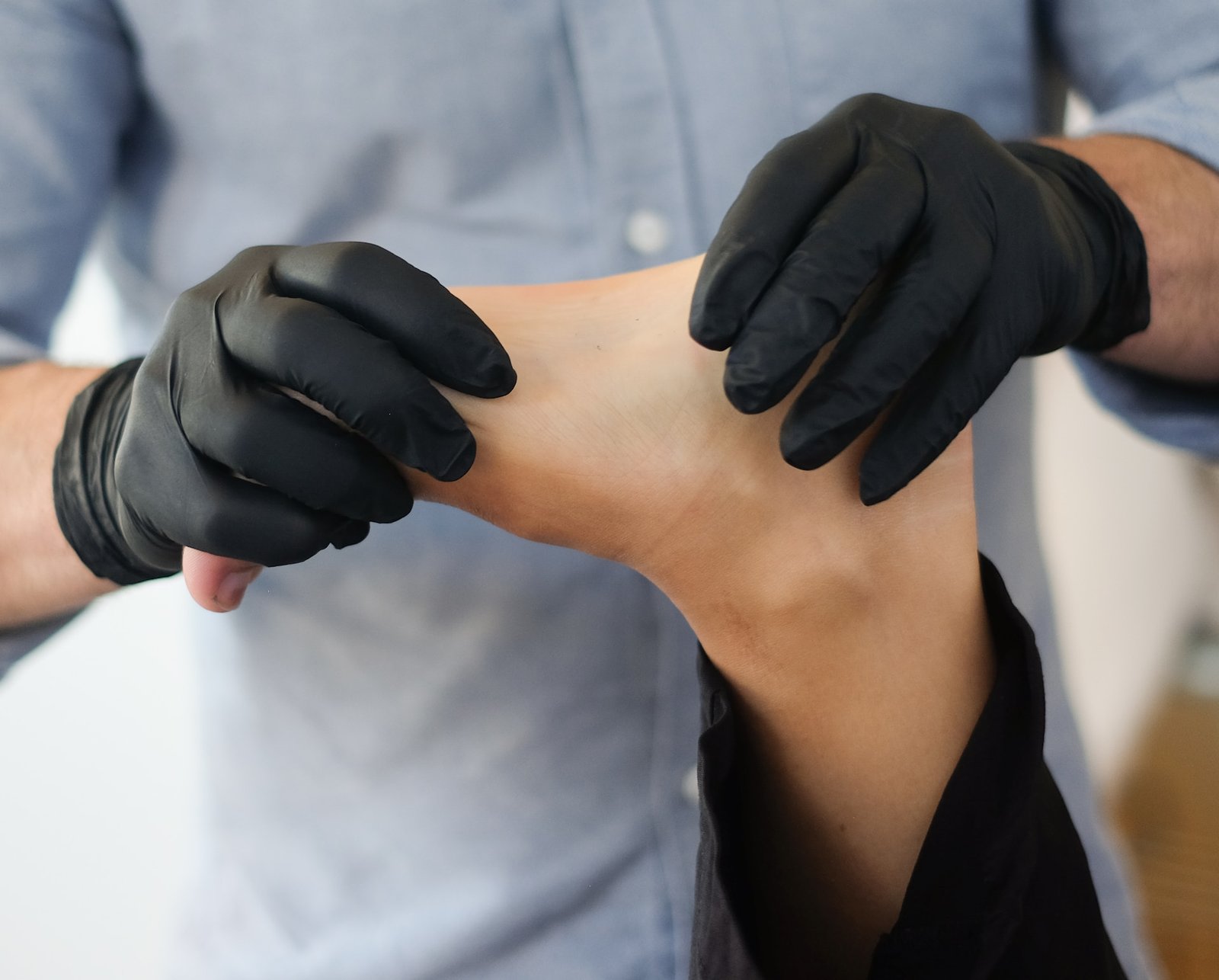Imagine you’re embarking on a serene morning walk, the first light of dawn painting the sky in hues of pink and orange. Suddenly, a sharp pain emanates from your heel, disrupting the peaceful moment. This pain, a common companion for those suffering from plantar fasciitis, can transform simple activities into daunting tasks. But fear not, for this journey, though challenging, leads towards a plantar fasciitis recovery timeline and the eventual joy of pain-free steps once more.
Understanding Plantar Fasciitis
Plantar fasciitis is a condition that occurs when the plantar fascia, a ligament that runs along the bottom of your foot, becomes inflamed. This inflammation can cause sharp pain and discomfort in the heel, making it challenging to walk, stand, or engage in physical activities.
The plantar fascia plays a crucial role in supporting the arch of your foot, and repetitive motion or excessive stress can lead to microtears and inflammation of the ligament. Understanding the triggers and science behind plantar fasciitis is essential for managing the condition effectively.
What Triggers Plantar Fasciitis?
Several factors can contribute to the development of plantar fasciitis. Engaging in activities that involve long periods of standing, repetitive motion, or excessive stress on the feet can put strain on the plantar fascia, leading to inflammation and heel pain.
Hard surfaces, like concrete or asphalt, can also aggravate the condition, as they don’t provide adequate shock absorption.
Wearing unsupportive footwear, such as flip-flops or shoes with minimal arch support, can further contribute to the risk of plantar fasciitis. Understanding these triggers can help you make lifestyle adjustments to prevent or manage the condition.
The Science Behind Plantar Fasciitis
Plantar fasciitis is a result of inflammation of the plantar fascia, the ligament that connects the heel bone to the toes. When the plantar fascia undergoes excessive stress or overuse, it can lead to microtears and irritation, causing pain and discomfort.
Over time, untreated plantar fasciitis can also affect the achilles tendon, leading to achilles tendonitis. In some cases, the repetitive stress on the plantar fascia can even cause a stress fracture in the heel bone. Understanding the science behind plantar fasciitis helps with both treatment and prevention strategies.

Recognizing the Recovery Signs of Plantar Fasciitis
During the recovery process of plantar fasciitis, it’s essential to recognize the signs of progress. As your foot heals, you may notice a decrease in discomfort, especially during weight-bearing activities. Pain, stiffness, and swelling should gradually subside over time. Increased mobility range, reduced swelling, and improved lower body strength are positive signs of recovery.
It’s important to understand that the plantar fasciitis recovery timeline can vary depending on the severity of the condition and the treatment options pursued. Let’s explore the different stages of recovery and what you can expect during each phase.
Decreased Discomfort during the Day
One of the significant signs of the plantar fasciitis recovery timeline from plantar fasciitis is a decrease in discomfort throughout the day, specifically during weight-bearing activities. As your foot heals, you may start to notice improvements in your ability to walk, stand, or exercise without the sharp pain associated with plantar fasciitis.
Symptoms such as heel pain and stiffness should gradually decrease, allowing for increased comfort during daily activities. Reaching this stage indicates progress in your recovery journey.
In addition to decreased pain, there are other signs that point to recovery. Increased mobility range is an important milestone in the healing process of plantar fasciitis. As your foot heals, you may find that movements and exercises that were challenging during the acute phase become easier over time.
Flexibility and mobility improvements contribute to the overall recovery process, allowing for a return to regular physical activities and sports. Physical therapy, stretching exercises, and supportive footwear play a crucial role in promoting mobility recovery.
Another positive sign of recovery is the reduction of swelling and inflammation. During the initial stages of plantar fasciitis, the affected foot may exhibit swelling, tenderness, and inflammation.
However, as the healing process progresses, the swelling should subside, leading to enhanced mobility and a reduction in pain.
Employing treatment options such as rest, ice, and elevation can help manage swelling and inflammation, contributing to the recovery timeline.
Furthermore, the recovery process often results in a stronger lower body. With time, physical therapy, and exercises, the calf muscles, arch of the foot, and supportive structures grow stronger, supporting the recovery from plantar fasciitis. A stronger lower body promotes stability, balance, and resilience, reducing the risk of recurrence and improving overall foot health. Embracing strength training and targeted exercises helps build resilience, support, and functionality, facilitating a more robust recovery process.
Increased Mobility Range
Progressing in the recovery process is often characterized by a broadened range of motion and flexibility in the foot, ankle, and lower leg. Individuals may experience increased ease of movement, especially during activities that previously caused discomfort or limited mobility. Enhanced mobility can improve overall quality of life, enabling a return to regular physical activities and sports.
Range of motion exercises, stretching, and physical therapy are vital in promoting mobility recovery. As time passes, patients may regain the ability to perform movements and exercises that were challenging during the acute phase of plantar fasciitis.
Reduced Swelling and Inflammation
A visible decrease in swelling, particularly around the heel and foot arch, signifies advancement in the healing process. As inflammation diminishes, individuals often experience reduced pain, stiffness, and discomfort in the affected foot.
The reduction in swelling enables better mobility by alleviating the pressure and discomfort associated with plantar fasciitis. Managing swelling and inflammation through rest, ice, and elevation contributes significantly to the overall recovery timeline.
Over time, the affected foot may exhibit improved tissue health, appearing less swollen and feeling less tender, indicating recovery progress.
Stronger Lower Body
Enhanced strength in the calf muscles, arch of the foot, and other supportive structures contribute to the recovery from plantar fasciitis. Targeted exercises promote stability and resilience, reducing the risk of recurrent injury. Over time, individuals experience improved endurance and confidence in their physical capabilities.
Such strength training fosters functionality in the lower body, facilitating a more robust recovery process. A stronger lower body not only aids recovery from foot pain but also improves overall foot health and reduces the risk of related issues like achilles tendonitis and stress fracture.

The Recovery Timeline of Plantar Fasciitis
The recovery timeline for plantar fasciitis can vary widely depending on the individual, the severity of the condition, and the treatment options pursued. On average, it can take anywhere from several months to over a year for plantar fasciitis to fully heal. Mild cases may resolve within six to twelve months, while more severe or chronic cases may require up to two years of treatment and recovery. It’s important to note that every recovery journey is unique, and factors such as adherence to treatment plans, lifestyle adjustments, and regular physical therapy can impact the healing process.
Early Recovery Stage
During the early recovery stage, the focus is on pain management, inflammation reduction, and implementing self-care strategies. This stage usually involves a combination of professional care and home remedies, aimed at alleviating symptoms and promoting healing. Some key aspects of the early recovery stage include:
- Resting the affected foot, avoiding activities that exacerbate the pain
- Applying ice packs to reduce inflammation and swelling
- Engaging in stretching exercises to maintain flexibility and mobility
- Utilizing supportive footwear or orthotics for added arch support
- Taking these measures during the early recovery stage lays the foundation for the healing process, providing relief and preparing your foot for the subsequent stages of recovery.
Mid Recovery Stage
As you enter the mid recovery stage, the focus shifts towards gradual increases in physical activities, strengthening exercises, and continued treatment. It’s crucial to follow the treatment plan prescribed by your healthcare professional during this stage. Some key elements of the mid recovery stage include:
- Continuation of physical therapy sessions, if recommended
- Incorporating stretching exercises, targeting the plantar fascia tissue
- Choosing supportive footwear to reduce stress on the foot
- Utilizing orthotics, such as arch supports, for added stability and pain relief
- The mid recovery stage plays a significant role in building resilience, increasing strength, and improving mobility. Adhering to the prescribed treatment plan is essential for optimal recovery.
Final Recovery Stage
The final recovery stage marks the achievement of full mobility, pain-free movement, and the ability to return to normal activities. This stage focuses on maintaining the progress made during the earlier phases and continuing with exercises and treatment options. Some key aspects of the final recovery stage include:
- Regaining full mobility in the foot, with no pain or stiffness
- Undertaking strength training exercises to further support the foot
- Gradually returning to normal physical activities, sports, and exercises
- Implementing long-term lifestyle adjustments to prevent recurrence
- Reaching the final recovery stage is a significant milestone, indicating that your foot has healed, and you can resume your regular routine with reduced risk of pain or injury.

Managing Plantar Fasciitis: Treatment Options
When it comes to managing plantar fasciitis, there are various treatment options available. It is important to seek professional care, as a proper diagnosis and treatment plan can significantly improve recovery outcomes. A physical examination, along with a thorough medical history, can help determine the best approach for your specific condition. Some common treatment options for plantar fasciitis include:
- Rest, physical therapy, and stretching exercises
- Utilizing orthotics or arch support to relieve stress on the foot
- Using splints or night braces to stretch the plantar fascia while sleeping
- Taking over-the-counter pain relievers to manage inflammation and pain
- A comprehensive treatment plan, tailored to your needs, can effectively manage symptoms, promote healing, and prevent recurrence of plantar fasciitis.
Home Remedies and Lifestyle Adjustments
In addition to professional care, home remedies and lifestyle adjustments can play a significant role in managing plantar fasciitis. Some effective home remedies include:
- Applying ice packs to the affected area for pain relief and swelling reduction
- Stretching exercises for the calf muscles, achilles tendon, and arch of the foot
- Using arch support, such as orthotic inserts, to provide extra cushioning and support
- Maintaining a healthy weight to reduce stress on the foot
- By incorporating these home remedies and making lifestyle adjustments, you can support the recovery process, alleviate symptoms, and prevent the recurrence of plantar fasciitis.
Physiotherapy Techniques
Physical therapy is a valuable treatment option for plantar fasciitis, as it focuses on stretching exercises, mobility work, and pain-relief techniques. Working with a physical therapist can help optimize your recovery process and ensure proper healing of the plantar fascia tissue. Some common physiotherapy techniques used for plantar fasciitis include:
- Gentle stretching exercises for the plantar fascia, calf muscles, and achilles tendon
- Massage therapy to alleviate pain, improve blood flow, and promote healing
- Utilization of sports medicine strategies, such as stretching, mobility exercises, and orthotics

When to Consider Surgical Interventions
In most cases, plantar fasciitis can be effectively managed without the need for surgical intervention. However, there are instances where surgery may be considered, especially for individuals who do not respond to conservative treatment options. Surgical options for plantar fasciitis may include plantar fasciotomy or plantar fascia release, which involve the partial or complete release of the plantar fascia ligament. It is important to discuss the potential benefits, risks, and recovery time with your healthcare professional before considering surgical interventions.
Preventing a Recurrence of Plantar Fasciitis
While recovering from plantar fasciitis is an important milestone, preventing a recurrence of the condition is equally crucial. By implementing certain measures, you can reduce the risk of the plantar fasciitis symptoms returning. Here are some preventive strategies:
- Engage in regular stretching exercises for the calf muscles, achilles tendon, and plantar fascia. These exercises help maintain flexibility, support foot health, and prevent excessive stress on the ligament.
- Incorporate regular, low-impact exercises, such as swimming or cycling, into your routine. These activities promote overall foot strength and can reduce the risk of overuse injuries.
- Maintain a healthy weight through a balanced diet and exercise. Excess weight places additional stress on the plantar fascia, increasing the risk of inflammation and pain.
- Avoid prolonged periods of standing on hard surfaces whenever possible. If your job requires long periods of standing, consider cushioned mats or taking breaks to rest your feet.
- Wear supportive footwear with cushioning and arch support. Choose shoes that provide adequate shock absorption and stability for your foot type.
- By following these preventive measures, you can significantly reduce the chances of plantar fasciitis recurring and enjoy long-term foot health.
Importance of Regular Stretching and Strengthening Exercises
Regular stretching and strengthening exercises are vital for the overall health of your feet and for the prevention of plantar fasciitis. Calf stretching exercises, particularly for the achilles tendon, can help maintain flexibility, reduce the risk of overuse injuries, and improve foot stability.
Strengthening exercises for the arch of your foot, such as toe curls and arch raises, can enhance the supportive structures surrounding the plantar fascia. Including these exercises in your daily routine helps build resilience, promotes foot health, and minimizes the chances of plantar fasciitis recurrence.

Does Plantar Fasciitis Go Away Completely?
Plantar fasciitis can often be effectively managed, resulting in a complete recovery with minimal symptoms. However, it’s important to note that the healing process and recovery timeline can vary for each individual. With proper treatment, rest, and targeted exercises, the majority of people with plantar fasciitis experience a significant improvement in symptoms, allowing them to resume regular activities without pain or discomfort.
While plantar fasciitis can be a chronic condition for some individuals, especially if left untreated or if contributing factors persist, it is possible to achieve long-term relief and manage the condition effectively
How long does it take for plantar fasciitis to fully heal?
The recovery timeline for plantar fasciitis varies based on its severity. Mild cases can heal within 6-12 months, while severe cases may take up to 2 years. Treatment options like stretching, physical therapy, and orthotics can expedite the healing process. Consistency in treatment is crucial to prevent recurrence.
Can plantar fasciitis heal on its own, or is treatment necessary for a full recovery?
Treatment for a full recovery of plantar fasciitis is often necessary, although it can heal on its own with rest and self-care. Options like physical therapy, stretching exercises, and orthotic inserts can expedite the healing process. Seeking medical advice for persistent or severe cases is important.
Is it possible to prevent future recurrences of plantar fasciitis after recovering from an initial episode?
Preventing future recurrences of plantar fasciitis is possible. Maintaining a healthy weight, wearing supportive shoes, and doing stretching exercises for the feet and calves can help prevent the condition from returning. Gradually increasing exercise intensity and duration can also reduce the risk of future episodes.

Conclusion – Plantar Fasciitis Recovery Timeline
Recovery from plantar fasciitis is a gradual process, influenced by the severity of the condition and the treatment approach adopted. Embracing patience and consistency in following through with recommended therapies is essential. Remember, each step taken towards recovery brings you closer to resuming the activities you love, without the shadow of pain. As you continue on this path, consider: How will you celebrate your first pain-free steps?
I hope you found this blog helpful and please feel free to comment and share.
Thanks for reading!
 | Tracy J. Founder, The heel GP |

I am genuinely amazed by the deep insights and superb way of expressing complex ideas. Your depth of knowledge clearly stands out in every sentence. It’s obvious that you put a lot of effort into delving into your topics, and this effort does not go unnoticed. Thank you for sharing such valuable insights. Keep up the great work! https://rochellemaize.com
I’m thoroughly captivated with your deep insights and excellent way of expressing complex ideas. The knowledge you share clearly stands out in each paragraph. It’s evident that you invest a great deal of effort into understanding your topics, and this effort is well-appreciated. Thanks for providing such detailed information. Continue the excellent job! https://www.elevenviral.com